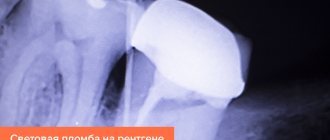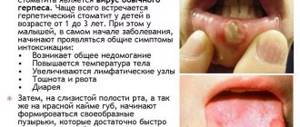Before you begin to treat some diseases, it is necessary to remove the nerve in the affected tooth. To do this, they can temporarily install arsenic.
This method is safe if you follow all the rules for its use and keep it for the required amount of time. What are these rules and how long to keep arsenic? You will find out after reading the article.
The first reason is that the drug takes time to “kill” the nerve.
The pulp is the most sensitive organ of the tooth, which consists of nerve endings, an interweaving of blood vessels and capillaries. If the pulp is inflamed, which happens with pulpitis, the person feels severe pain. When the disease is advanced, the dentist decides to remove the nerve. Today, in progressive clinics, this can be done in one visit, completely painlessly under anesthesia, with the help of special drugs and instruments, and thereby avoid arsenic. However, in most regional medical institutions, doctors use arsenic paste as an inexpensive alternative, i.e. first they “kill” the nerve, and only then remove it. This method of treatment is called “devital”.
It takes the drug some time to “kill” the nerve.
The paste has a powerful irritating effect, its action leads to disruption of metabolism and blood circulation in tissues, to the breakdown and death of cells. It takes time for the pulp to lose sensitivity. On average, for single-rooted teeth – about 24 hours, for multi-rooted teeth – up to 48 hours.
Arsenic is considered a toxic substance, but the toxicity of modern drugs based on arsenous acid anhydride is minimal, however, provided that it is used correctly! The advantage is that such pastes have a more gentle composition (than those that were created 10-20 years ago). They also add anesthetic and antiseptic drugs that help reduce pain and neutralize the toxicological effect.
If you have a toothache with arsenic, then you need to know what to do and how to react to it. Thus, moderate pain within 1-2 days after placing the drug into the destroyed cavity can be considered normal. To get rid of it, just take tablets from your home medicine cabinet: for example, Nurofen, Ketorol.
The second reason is leakage of the temporary filling and burn of the mucous membrane
As mentioned earlier, the pain usually goes away after a few days. However, if you have been diagnosed with arsenic, and the tooth hurts unbearably, the pain occurs after some time, or first went away and then returned, then you need to be wary.
First, conduct a visual examination of the oral cavity. Perhaps the doctor did not install the temporary filling hermetically or its integrity was damaged (for example, you started eating earlier than 2 hours after visiting a specialist and did not allow the materials to harden). If the protective barrier is depressurized, particles of the drug can enter the oral cavity, causing a burn to the mucous membrane and surrounding soft tissues. During a visual examination, hyperemia of the mucous membrane and its redness will also be noticeable.
One of the causes of discomfort may be a burn to the oral mucosa
In such a situation, you need to thoroughly rinse your mouth with an antiseptic, close the opened cavity with a cotton swab and visit a doctor as soon as possible. Remember that you should not remove arsenic from the tooth yourself, because... this may make the situation worse. Next, to treat the wound, it will be necessary to use products that promote rapid restoration and tissue regeneration - vitamin A, rosehip or sea buckthorn oil.
Remember that leaving the paste on the gums for too long can lead not only to burns, but also to tissue necrosis. From an open cavity, arsenic can enter the stomach, which will lead to gastrointestinal upset and the appearance of symptoms of intoxication of the body: a metallic taste in the mouth, abdominal pain, nausea and headache.
The third reason is incorrect calculation of the dosage of the drug
If you are going to treat pulpitis, be sure to contact only experienced specialists. After all, there are often cases of medical errors when the doctor, when putting the drug into the tooth cavity, makes a mistake with the dosage of the paste, does not take into account the patient’s age, the condition of the nerve and the size of the tooth.
The situation when you put arsenic on a tooth, and it hurts, can arise both in the case of an insufficient amount of the drug, and in the case of an excess of it. In the first situation, the paste was not enough to “kill” the sensory nerve, which is why it hurts. Experts call this condition “residual pulpitis.” In the second situation, pain is evidence of irritation of the periodontal tissues and the toxicological effect of an overdose of the drug.
When you need to see a doctor urgently
Constantly monitor your oral cavity and dentofacial apparatus, and do not neglect preventive measures. Only timely elimination of the causes of caries, gingivitis, pulpitis, periodontitis and other diseases will help avoid serious consequences. The price for pulpitis treatment at the ARTE-S center is affordable. The clinic always has a reasonable cost policy.
In those situations where the discomfort from the underlying arsenic is tolerable and its intensity gradually subsides, nothing needs to be done. With increasing throbbing pain, swelling, hyperemia of the mucous membrane of the gums and an increase in temperature, you need to run to the doctor. If the chewing process is very painful, facial asymmetry has occurred, or the lymph nodes have become enlarged, immediately visit the dentist.
Dental therapy is a responsible process for both the dentist and the patient. This is especially true when removing nerves. Therefore, only a doctor will solve the problem of severe pain. He will remove the incompletely removed nerve, correctly fill the dental canals, and cope with the problem of perforation of the walls or root of the causative unit.
The fourth reason is the individual reaction of the body
The reason is rare, but do not forget that each person is individual. A long-term or acute painful reaction can occur both to arsenic anhydride itself and to the auxiliary components included in the paste. Most often, pain occurs due to a lowered pain threshold and the patient’s tendency to allergic reactions.
Pain may occur due to allergies and individual intolerances
“Once in my youth I had pulpitis, the doctor put medicine inside to kill the nerve and didn’t even say whether the tooth with arsenic should hurt. He told me to come for an appointment only in a few days. There was no Internet back then, and we took the doctors’ word for it. I came home in blissful ignorance, and after about two hours the pain began to be so severe that I wanted to climb the wall. Analgin did not help to remove it, so the next day I ran back to the hospital begging them to do something. And the doctor looked at me in such surprise, saying, I’m kind of wild, and he almost pushed me out of the office, saying, I have to walk for another day. But it turns out that there were only flowers at home - the berries started at the follow-up appointment. The pain not only did not go away, but became even stronger than before. I don’t know how I survived that day. Since then I’ve been trying not to let my teeth get into trouble like that, because... the thought of pulpitis causes terrible experiences.”
Marina Vasilievna, Novocherkassk, review from woman.ru
With individual body reactions, pain may be accompanied by other symptoms: increased body temperature, severe swelling of the mucous membrane. The most dangerous situation is anaphylactic shock due to an acute allergic reaction to the drug, therefore, if the condition sharply worsens after installing a filling with arsenic, it is better to immediately call an ambulance.
Depulpation procedure
Modern dentistry performs depulpation quickly and painlessly, using anesthesia. Therefore, to the question of many patients about whether it is painful to fill canals and remove a nerve from a tooth affected by caries, one can unequivocally answer that in case of proper anesthesia, there is no pain. Patients feel some discomfort during anesthesia during the injection. However, such pain lasts literally a second, and soon the tooth and the tissue around it begin to go numb, as a result the patient does not feel anything.
Removal of the nerve takes place in one session and consists of several stages.
- Before starting the procedure, the doctor sends the patient for an x-ray. The image will show how badly the tooth is damaged.
- This is followed by anesthesia if there are no contraindications to the use of anesthesia.
- By removing damaged tissue, the doctor provides himself with easy access to the pulp being removed.
- The depulpation procedure is performed using dental instruments.
- The procedure is completed by filling the canals and installing a filling.
In some cases, the dentist puts a temporary filling and releases the patient for a few days. At the second visit, an x-ray is taken again, which allows you to evaluate the quality of the canal filling, and then a permanent filling is installed.
The fifth reason is the presence of paste in the tooth for a long time.
It is worth remembering that modern preparations based on arsenic anhydride can be kept in the tooth cavity for 1 to 7 days (depending on the concentration of arsenic). If the doctor has assigned you a specific day for a follow-up visit, then it is highly undesirable to postpone it to a later date. If you postpone a visit to the doctor for a long time, you may encounter serious complications that will threaten your health.
Don't miss your doctor's appointment
Contraindications
Since arsenic is an aggressive and toxic substance, in some cases it cannot be used.
Contraindications for use include:
- Due to the toxicity of arsenic, it cannot be used in some cases.
Allergy to arsenic components (trioxy, lidocaine, ephedrine).
- Treatment of infants (up to 1.5). Their body, due to its instability, cannot cope with the negative effects of arsenic, even if tiny fractions of the drug are used.
- Killing of nerves in children with unformed or absorbable tooth roots.
- If the doctor, after installing arsenic, cannot completely clean and expand the canals in the tooth. It depends on the individual structure of the roots of each person. There are cases when the patient has a strong curvature of the canals, or part of it is closed or blocked by tartar (denticle).
- When the roots were subject to perforation (an artificial through hole was made), or when the roots were separated.
- With increased intraocular pressure , which signals the risk of developing glaucoma.
- If the patient suffers from diseases of the urinary and reproductive systems (even worse - with kidney or prostate diseases).
The sixth reason is serious complications
Have you been given arsenic, but your tooth hurts more and more and does not go away? What to do in this case? Consult a doctor as soon as possible in order to exclude the above reasons (points 2-5). If you ignore them, then most likely you will develop complications, the main symptom of which is also quite severe pain (it may not be relieved by anesthetics).
Here is a list of the complications you may encounter:
- drug-induced or arsenic periodontitis: most often develops due to prolonged exposure to the active drug or its overdose. May occur due to an allergic reaction. The pain can radiate to different areas of the jaw; it is usually aching in nature and intensifies when biting and chewing food. In this case, the diseased tooth may become mobile,
- Gingival papillitis: inflammation of the gingival papillae. It may occur due to an individual reaction of the body or an allergy to arsenic, due to a burn of the mucous membrane by particles of the drug. Characteristic symptoms are pain, swelling and bleeding of the mucous membrane, the presence of ulcers,
- osteonecrosis1, leading to resorption, deformation and osteoporosis of the jaw bone: this is the most dangerous complication, so if there is arsenic in the tooth and the tooth hurts, do not ignore the unpleasant symptoms for more than a few days. The disease is difficult to define and differentiate, because has no specific clinical manifestations for a long time (even after removing the paste), except for prolonged pain. Most often, when a pathology is detected, it is necessary to remove the tooth, carry out surgical manipulations and long-term therapy aimed at healing the wound formed after extraction and restoring tissue.
Arsenic periodontitis can become an unpleasant complication after the procedure.
When a doctor uses a drug such as arsenic paste, remember that short-term pain is quite normal, and you need to be prepared for it. The main thing is to remove the paste in time (only a dentist can do this!) and complete the treatment of the tooth. But it is better, of course, to contact dentists that offer a modern, namely vital, method of treating pulpitis. This will minimize any complications, worries and discomfort.
Notice
: Undefined variable: post_id in
/home/c/ch75405/public_html/wp-content/themes/UltraSmile/single-item.php
on line
45 Notice
: Undefined variable: full in
/home/c/ch75405/public_html/wp-content /themes/UltraSmile/single-item.php
on line
46
Rate this article:
( 1 ratings, average: 5.00 out of 5)
toothache
- Kostina I.N., Nikolaeva A.A. Arsenic necrosis of the jaw. Complication in the treatment of dental pulpitis. Problems of dentistry, 2010.
Expert “The devital method of nerve removal using arsenic paste is inappropriate to use at today’s high level of development of dentistry without serious indications (for example, intolerance to all existing anesthetics). Today there is a more productive and at the same time more pleasant in every sense method of vital pulp extirpation (the nerve is removed with special files without applying a devitalizing paste). The procedure is performed under anesthesia, has fewer complications, and does not require the patient to experience moral distress, time, or the need to endure toothache for several days.” Dentist-therapist, orthopedist Litvinenko Olga Viktorovna
Consulting specialist
Geraskina Inna Igorevna
Doctor rating: 9 out of 10 (2) Specialization: Dentist-therapist, orthodontist Experience: 11 years
Comments
During an examination in kindergarten, the doctor recently diagnosed my daughter with pulpitis of a baby tooth. He spoke with the teachers, mostly in terms of the same terms, and suggested devital amputation of the dental pulp. I wrote out a recommendation to go to the clinic. Then I started reading on the Internet and became even more confused - how does devital differ from vital? How is amputation different from extirpation?
Ekaterina (11/23/2019 at 2:26 pm) Reply to comment
- Dear Ekaterina, the devital method involves first killing the nerve of the tooth using special arsenic pastes, and then extracting it. Vital involves removing the nerve in one visit to the doctor without the use of pastes under a powerful anesthetic. As for amputation, amputation is most often used in children and involves partial removal of the pulp (the coronal part is preserved, but the root part is removed, then the cavity is filled with a special paste that mummifies the remaining part of the pulp to prevent further spread of infection). The nerve is partially removed so that the roots of the tooth can grow, develop, and receive adequate nutrition. During extirpation, both the coronal and root parts of the pulp are removed - this method is used in adults.
Editorial staff of the portal UltraSmile.ru (11/26/2019 at 09:13) Reply to comment
I remember back in my teens I decided to go to the local dentistry in the area, students were just doing an internship there, in general, in order to kill the nerve, they put arsenic on me, but they didn’t make a hermetically sealed filling, in the morning I went to a private clinic, why in public clinics until Is this method still used?
Alexander93 (12/10/2019 at 10:51 am) Reply to comment
My tooth ached, they drilled it out and said that it was necessary to put arsenic, which they did. They told me to come after the weekend. I had such pain in this tooth that I wanted to call an ambulance. On Monday they said that the arsenic had no effect and the nerves were removed live. Why did it happen? Doctor's mistake?
Irina (12/10/2019 at 2:16 pm) Reply to comment
The doctor placed arsenic under the teenager’s filling in order to kill the nerve. But the tooth has been hurting very badly for the second day now. How long will such pain last, and is it dangerous for arsenic to remain under the filling for a long time?
Elvira (12/10/2019 at 7:37 pm) Reply to comment
The doctor put a little arsenic under the filling for the girl, several days have already passed, and the pain is still present, although the doctor himself claimed that the nerve would die within 24 hours. What causes this toothache then, and how can it be relieved?
Olga Rolenko (12/11/2019 at 01:24) Reply to comment
Hello, I have the following question. My son was diagnosed with tooth pulpitis. What to do? Tear out? Or is there a way to cure it painlessly? Waiting for your reply. Thank you.
Zhanna (12/11/2019 at 01:31 pm) Reply to comment
About 5 months ago I went to the dentist to have tooth decay treated. I also often have stomatitis and my gums become inflamed. The doctor put arsenic on one tooth, and everything with that tooth seemed to be fine afterwards. Then she examined another tooth another time and said that I had pulpitis, and suggested putting arsenic first. But then they took a picture and said it was better to remove the nerve. Removed it the same day. But to this day I still have pain when chewing, even though the nerve was removed. Almost half a year has passed. I took a picture twice and everything was clean on it. The doctor examined me and didn’t see anything either. What could this be connected with, how can I find out the reason if two dentists found nothing? Or was it also necessary to first administer arsenic before removing the nerve?
Marina (12/11/2019 at 6:31 pm) Reply to comment
I don’t understand how, with the current level of development of medicine (and dentistry in particular), it is possible to use such a dangerous substance as arsenic. After all, there are alternatives to arsenic paste? Or is there no other way to cure pulpitis? I would like to clarify this issue for the future.
Irina (12/11/2019 at 6:46 pm) Reply to comment
Hello! I have a tooth problem. A long time ago, back in school, I had a filling installed, after 4 years I had repeated caries, the filling fell out. Now it has begun to crumble, the gums are swollen and red. The tooth is a little loose. Is it worth treating it or is it better to remove it immediately?
Larisa Novikova (02/06/2020 at 17:06) Reply to comment
Please tell me, can there be an allergy to such a temporary filling with arsenic? And should the doctor warn me in advance that he will put arsenic in my tooth, which is actually poisonous...
Regina (03/16/2020 at 10:55 am) Reply to comment
At one time, I had more than one tooth treated using arsenic at the initial stage of treatment. I was lucky and never had any complications. But now my son has been given arsenic and he has been complaining of severe pain for three days now. On what day should the pain go away if everything is fine? His follow-up appointment is only in three days, is it worth going earlier?
Angelina (03/16/2020 at 05:49 pm) Reply to comment
Why, when treating a multi-rooted tooth, did the doctor prescribe sessions for me 6-7 days apart, gradually apply the medicine three times, and I constantly felt pain for a long period? Is it normal that after completing treatment, the tooth hurts for another week?
Vyacheslav (04/23/2020 at 07:48) Reply to comment
I have several questions: 1. Is it possible to “kill” the dental nerve simply by applying arsenic? 2. If arsenic does not work and the nerve is still sensitive, can a filling be placed? 3. At what age does a child have a nerve removed before a filling? Is there an age limit?
Jean (04/23/2020 at 08:03) Reply to comment
I would also like to know for what reasons arsenic may not work at all. And then something like this happens: you suffer for 5 days, you go to the doctor, and the nerve is removed alive. And then one asks why he gave the money and suffered
Andrey (04/23/2020 at 08:53) Reply to comment
I had to deal with arsenic treatment, which was not a very pleasant feeling. The first day the tooth ached, I had to numb it. What modern methods of treating pulpitis without arsenic exist? Which ones do you recommend?
Svetlana Yuryevna (04/23/2020 at 10:59 am) Reply to comment
Write your comment Cancel reply
Safety precautions when treating with arsenic
Arsenic paste or arsenic is still a toxic substance that can cause great harm to a person’s well-being and health. To avoid unwanted side effects, it is recommended to follow the following rules:
- Take care of the temporary filling. After the doctor has put the paste into the tooth, he always covers it with a temporary filling on top. This is done so that the drug is not washed out by saliva and food and can affect the pulp. A temporary filling is not placed to the full depth of the roots; a looser material is used for it - such that the dentist can then easily dig it out. Therefore, the temporary filling often falls out ahead of time. This is extremely undesirable, since arsenic should not be ingested or come into contact with the tissues surrounding the tooth. Therefore, while there is arsenic in the tooth, covered with a temporary filling, you should not overload it by biting nuts, caramels, or chewing hard, rough food.
- Don't miss deadlines. The doctor will always try to reduce them as much as possible, but at the same time give time for the medicine to work so that the removal of the pulp is painless. One day will not make a big difference. But many patients, due to lack of time or simply due to their own negligence, postpone the visit for weeks or even months. What happens in this case? Arsenic is not excreted from the body. It accumulates in tissues and remains there for life. And this threatens the development of periodontitis.
If arsenic is left in the tooth too long, then not only periodontitis can develop. Necrotization of the gums and soft tissues often occurs due to exposure to a toxic substance; gastrointestinal disorders and liver damage may occur.
If dental treatment is not completed on time, it can lead to serious complications of numerous internal organs, so it is better not to violate the deadlines set by the doctor and remove the poison on time, replacing it with a full filling.











